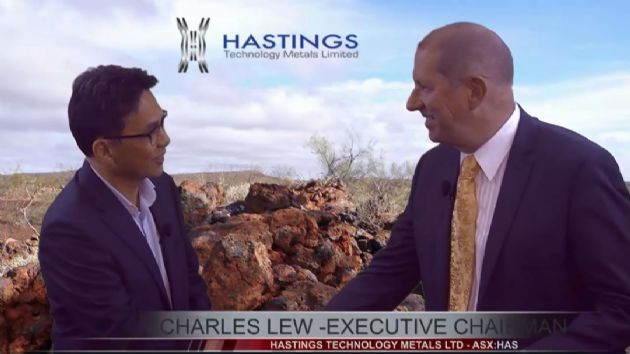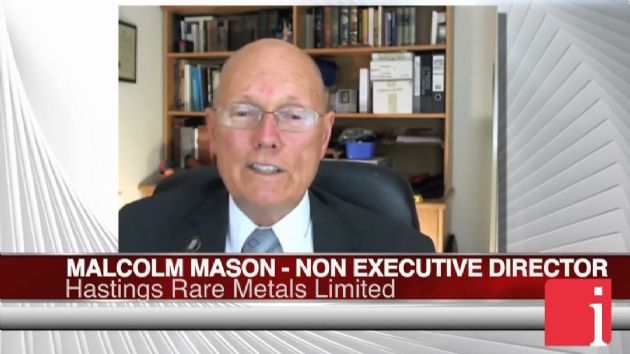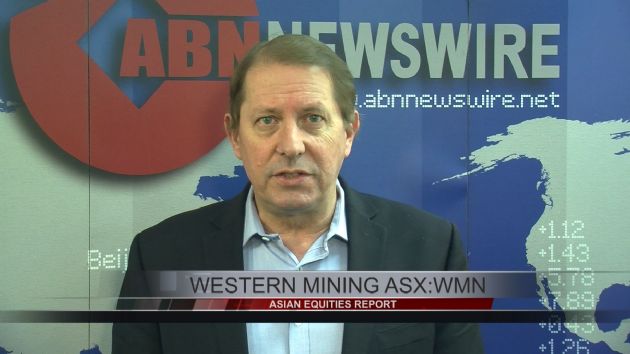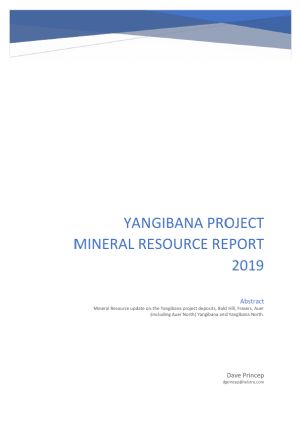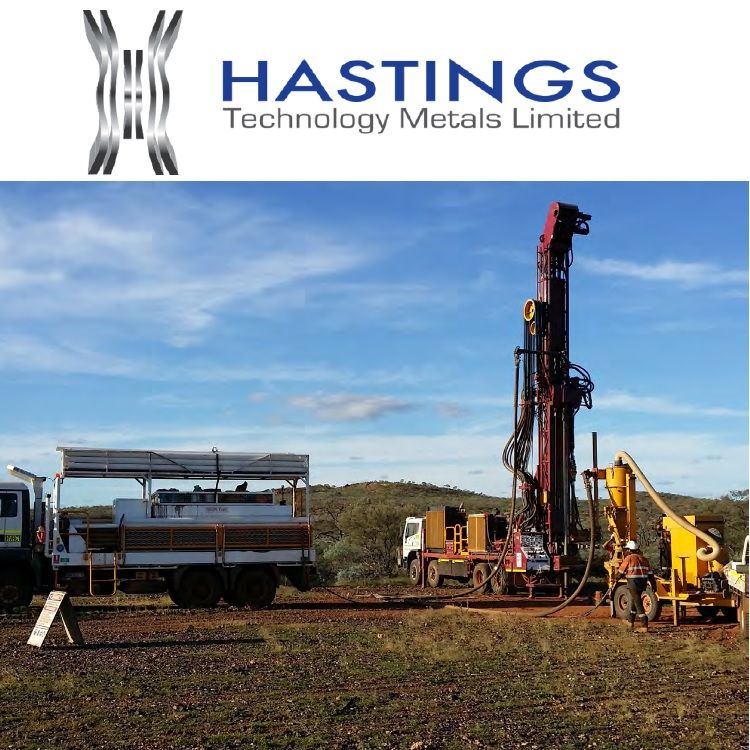
Half Yearly Report and Accounts
Sydney, Mar 14, 2018 AEST (ABN Newswire) - Hastings Technology Metals Ltd ( ASX:HAS) (
ASX:HAS) ( 5AM:FRA) submit the financial report of the Group consisting of Hastings Technology Metals Ltd ("Company" or "Hastings") and the entities it controlled during the half-year ended 31 December 2017. In accordance with the provisions of the Corporations Act 2001.
5AM:FRA) submit the financial report of the Group consisting of Hastings Technology Metals Ltd ("Company" or "Hastings") and the entities it controlled during the half-year ended 31 December 2017. In accordance with the provisions of the Corporations Act 2001.
Yangibana Project
JORC Resources
Following the completion of the 2017 exploration drilling programme at the Yangibana Project, an updated JORC Resource estimate was completed by independent consultants Widenbar and Associates Pty Limited. Total Resources now stand at 21.00mt as shown in Table 1 (see link below). Note that resource tonnes in the following tables are rounded to the nearest 100,000 tonnes and rounding errors may appear.
These resources include those within tenements held 100% by Hastings (see Table 2 in link below) and those held in joint venture with Hastings holding a 70% interest (Table 3 in link below).
Definitive Feasibility Study (see ASX announcement dated 28 November 2017)
During the period the Company released the Definitive Feasibility Study (DFS) for the Yangibana Rare Earths Project. The Project will produce a Mixed Rare Earths Carbonate (MREC) rich in Neodymium (Nd) and Praseodymium (Pr), critical materials used in the manufacture of permanent magnets, which are found in electrical components of many new technology products, from electric vehicles, renewable energy wind turbines and electronic consumer products.
The DFS demonstrates attractive economics using conservative price projections for the key rare earths of Nd-Pr which the company anticipates will have solid demand based on the strong trending growth of electric vehicles and wind turbines in particular, as well as other technological innovations. The DFS furthermore demonstrated the technical viability of the Yangibana flow sheet.
The DFS calculations are based on the Maiden JORC Ore Reserves of 5.15 million tonnes at 1.12% Total Rare Earths Oxide (TREO) for the first six years of operations, along with a Production Target for years 7 and 8 based on additional JORC Measured and Indicated Resources. All the Ore Reserves and Mineral Resources included in the DFS lie within tenements owned 100% by Hastings.
The production targets and underlying assumptions have not changed from the date of the release of the DFS on 28 November 2017 to the date of this report.
The Probable Ore Reserves at Bald Hill and Fraser's deposits are based on the JORC Resources shown in Tables 4 and 5 (see link below), that form part of the total resources of 21.00 million tonnes. Apparent discrepancies might appear due to rounding.
Mining by open pits will use conventional drill and blasting methods and it is planned to provide 1.0 million tonnes per annum of ore to the processing plant.
The ore dips at between 10 and 45 degrees and varies in thickness between 1m and 20m at Fraser's and 1m and 30m at Bald Hill, with an average thickness of 4m. The ore zone (ironstone) is visually distinct from the host rock, providing some control for ore identification.
RC grade control drilling will be done on a 10m x 10m grid to control ore delineation.
Selective blasting and mining around the ore zones are designed to remove the hanging-wall as cleanly as possible to expose the ore.
The ore will then be mined to the footwall contact using selective mining. Due to the high value of the ore, a high ore recovery will be the focus of mining. As such, a 50cm skin of dilution will be added to the ore mined to enable a 98% ore recovery assumption.
Pits will be dewatered ahead of mining using bores to provide a dewatered rock mass, with a maximum 8 litres per second pumped from each pit. Stormwater will be managed in pit using sumps and with capacity for pumping up to 10 litres per second in each pit.
Waste from each pit will be stored in adjacent waste dumps. Some of the Bald Hill pit will be backfilled to minimise haulage distances. Mineralised material will be transferred directly to the Run-Of-Mine (ROM) pad or to a low-grade stockpile with the mining trucks (as the distance travelled is reasonably low).
Pit optimisations have been completed to determine the economic mining limits for each deposit. Only Measured and Indicated Resources have been considered for processing. Pits have then been designed in stages to enable higher grades to be targeted and waste extraction to be deferred. Both Bald Hill and Fraser's pits are approximately 125m deep. The main Bald Hill pit is approximately 1,100m long and 600m wide. The Fraser's pit is approximately 600m long and 250m wide. The waste dumps have been located to minimise haulage distances and were constrained by lease boundaries (Bald Hill) and water courses. The Bald Hill dump covers an area of 100 hectares (ha), and the Fraser's dump covers 86ha.
The Company has completed extensive metallurgical testwork culminating in pilot plant tests on a composite sample of material from Bald Hill and Fraser's. This testwork has defined a route comprising crush, grind, flotation, acid bake with water leach and precipitation of a Mixed Rare Earths Concentrate. The key parameters are shown in Table 6 (see link below).
All environmental studies and approvals processing are progressing as required.
Based on the resources in Tables 1 and 2 (see link below) and the Modifying Factors, Snowden has estimated the Probable Ore Reserves as shown in Table 7 (see link below).
68% of the initial 8-year operating life is underpinned by these Ore Reserves. An Additional Production Target of 2.64 million tonnes of plant feed based on Measured and Indicated Resources from Auer, Auer North, Yangibana West and Yangibana deposits is included for the financial evaluation. These deposits were selected as the Mineral Resources in these deposits have been demonstrated, through variability testwork programmes, to be compatible with the process flowsheet developed in the DFS. Preliminary modifying factors were applied during a pit optimisation of the Mineral Resources to develop the Additional Production Target tonnage and subsequently, a mining schedule was developed from the optimised pits and used in the financial evaluation of the project.
The processing route commences with comminution and beneficiation, resulting in a beneficiated concentrate upgrade by 20 times from the ROM ore, as demonstrated through the DFS, to a 25% TREO concentrate.
This concentrate is further processed downstream through a hydrometallurgical process that involves acid bake, water leaching, impurity removal and precipitation to produce up to 15,000 tpa of MREC. The MREC will contain up to 3,400 tpa of neodymium oxide (Nd2O3)+praseodymium oxide (Pr6O11). Hastings will sell this Nd2O3+Pr6O11 rich MREC to rare earths oxides separators or other customers further along the rare earths supply chain.
The Project is estimated to generate annual sales revenue of A$379 million, a nominal after tax NPV of A$466 million (discount rate of 8%), an Internal Rate of Return (IRR) of 78% and a 2.3-year payback (average over the 8 years from first draw down) as shown in Table 8 (see link below).
Revenue streams are highly dependent on Nd-Pr prices as these account for 85-90% of projected revenue.
The Company will continue to work on identifying areas where capital expenditure can be further reduced. Significant gains have been achieved on operating expenses, with a reduction of 30% achieved from the PFS. With estimated annual operating expenses at A$142 million per year, the average operating cost for the project is A$17.0/kg TREO (US$12.8/kg), including all fixed and variable costs.
The DFS financial model assumes an average long-term US$/A$ exchange rate of US$0.75 and price forecasts from 2017 to 2027 for rare earths prices from Argus Media, an independent provider of price information, market data and business intelligence for the global resource industry. Hastings anticipates an increase in some of the key rare earths prices, especially Nd-Pr over the next decade due to the strong demand for permanent magnets arising from the growth in electric vehicles. The price rises seen in 2017 demonstrate that the Chinese authorities are having a degree of success in shutting down illegal production in China and Hastings expects the emphasis on sustainable production to continue in China and be supportive of Nd-Pr prices.
Native Title Agreement
In November 2017 the Company signed a Native Title Agreement (NTA) with the Thiin-Mah Warriyangka, Tharrkari and Jiwarli People (TMWTJ People) in respect of the Yangibana Project. The Agreement covers the entire 650km2 of the Yangibana project area.
Commercial
The strengthening in Neodymium (Nd) and Praseodymium (Pr) prices (+42% and +39% respectively year-on-year) and the signing of three offtake Memorandum of Understanding (MOU) agreements with three Chinese rare earth producers provide confidence in the successful development of the Yangibana Rare Earths Project.
The three MOUs signed to date represent approximately 40% of the planned MREC (Mixed Rare Earth Carbonate) annual production from Yangibana.
China further continued to fuel excitement around the announcement of electric vehicle (EV) developments. Chinese authorities hinted of policy changes in early September 2017, with the intention of banning fossil-fuel vehicles. This follows similar policy announcements made by India, Norway, France and the United Kingdom.
Vehicle manufacturers also made encouraging announcements regarding EV targets. Volkswagen will spend EUR 20 billion in R & D to develop electric vehicles. VW aims to roll out 80 EVs models across all its brands by 2025.
Given both policy and manufacturer announcements, the International Energy Agency predicts that by 2030 the stock of EVs on the road globally will total between 160 to 200 million, an almost 100 times increase of the EV stock today. These developments will drive the robust support in demand for Nd and Pr well beyond 2030.
Corporate
Capital Raising
The Company raised $21.5 million during the period with the issue of 139,021,512 shares. This included 51,046,512 at 8.6 cents per share on completion of the share purchase plan and 81,125,000 shares at 20 cents per share through a share placement.
Directors and Management
The Company appointed two new directors during the period, Guy Robertson on 31 July 2017 and Aris Stamoulis on 4 October 2017.
Mr Anthony Ho resigned on 29 November 2017. Mr Ho had previously served as the Company's Chairman and Chairman of the audit committee. The Board is appreciative of Mr Ho's contribution to the Company.
TERMINOLOGY USED IN THIS REPORT
Total Rare Earths Oxides, TREO, is the sum of the oxides of the light rare earth elements lanthanum (La), cerium (Ce), praseodymium (Pr), neodymium (Nd), and samarium (Sm) and the heavy rare earth elements europium (Eu), gadolinium (Gd), terbium (Tb), dysprosium (Dy), holmium (Ho), erbium (Er), thulium (Tm), ytterbium (Yb), lutetium (Lu), and yttrium (Y).
To view the full report with tables and figures, please visit:
http://abnnewswire.net/lnk/867M42O5
About Hastings Technology Metals Ltd
 Hastings Technology Metals Ltd (ASX:HAS) (FRA:5AM) is advancing its Yangibana Rare Earths Project in the Upper Gascoyne Region of Western Australia towards production. The proposed beneficiation and hydro metallurgy processing plant will treat rare earths deposits, predominantly monazite, hosting high neodymium and praseodymium contents to produce a mixed rare earths carbonate that will be further refined into individual rare earth oxides at processing plants overseas.
Hastings Technology Metals Ltd (ASX:HAS) (FRA:5AM) is advancing its Yangibana Rare Earths Project in the Upper Gascoyne Region of Western Australia towards production. The proposed beneficiation and hydro metallurgy processing plant will treat rare earths deposits, predominantly monazite, hosting high neodymium and praseodymium contents to produce a mixed rare earths carbonate that will be further refined into individual rare earth oxides at processing plants overseas.
Neodymium and praseodymium are vital components in the manufacture of permanent magnets which is used in a wide and expanding range of advanced and high-tech products including electric vehicles, wind turbines, robotics, medical applications and others. Hastings aims to become the next significant producer of neodymium and praseodymium outside of China.
Hastings holds 100% interest in the most significant deposits within the overall project, and 70% interest in additional deposits that will be developed at a later date, all held under Mining Leases. Numerous prospects have been identified warranting detailed exploration to further extend the life of the project.
Brockman Project
The Brockman deposit, near Halls Creek in Western Australia, contains JORC Indicated and Inferred Mineral Resources, estimated using the guidelines of JORC Code (2012 Edition).
The Company is also progressing a Mining Lease application over the Brockman Rare Earths and Rare Metals Project.
Hastings aims to capitalise on the strong demand for critical rare earths created by the expanding demand for new technology products.
| ||
|





